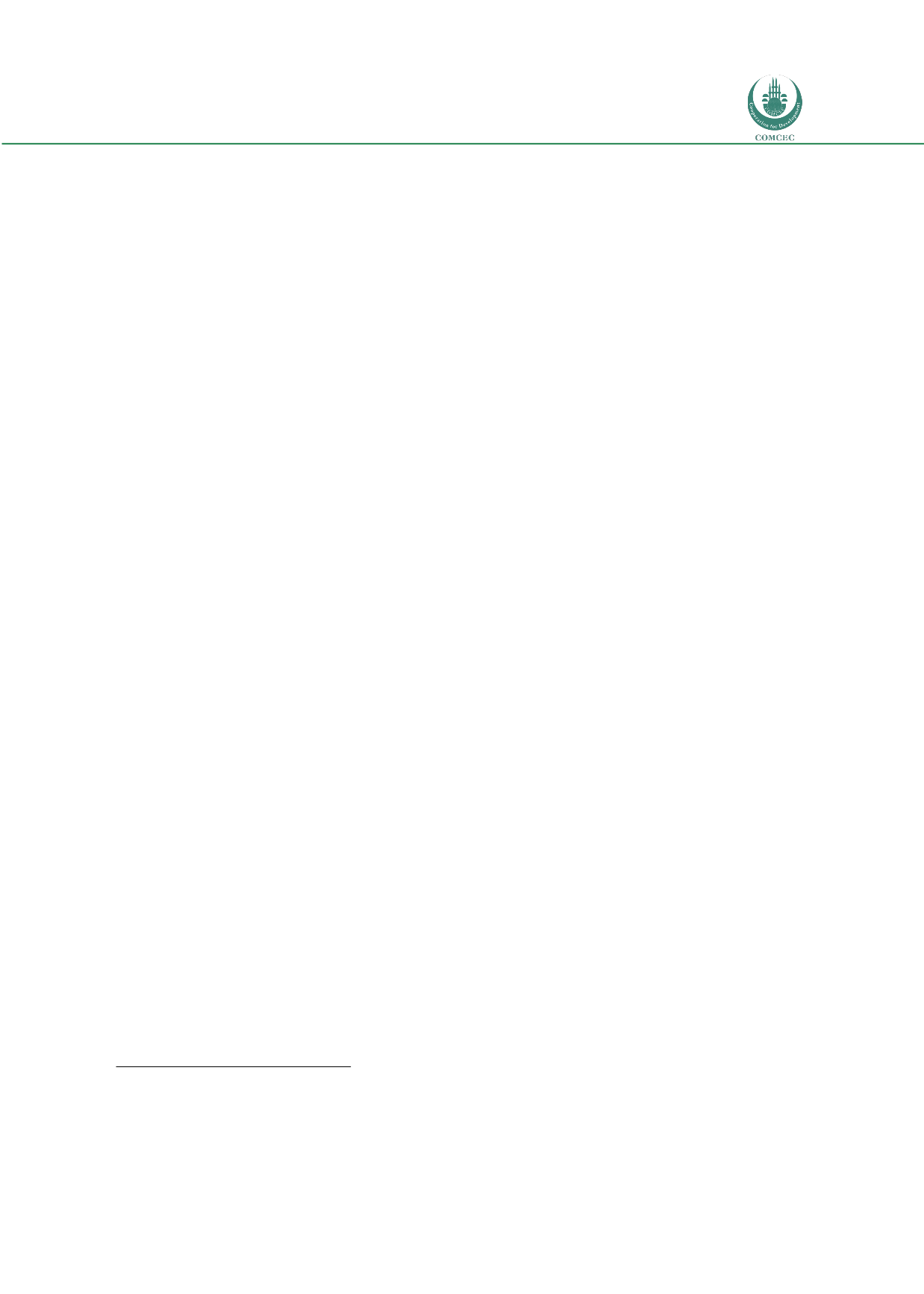

Risk Management in
Islamic Financial Instruments
35
important issue worth noting is that the participants of
takaful
pools have a small stake in the
decisions made for the fund (if a stake at all), while the operator’s actions, as you can see from
the structure of the contract, have a significant impact on all decisions (Hawary, Grais, and
Iqbal, 2003). As the IFSB (2006) notes,
“because the interests of policyholders may diverge from those of the shareholders of the
Takaful operator, whose board of directors is in principle acting on behalf of both groups but
which is appointed only by the shareholders, there is reason to consider whether policyholder
interests need to be represented within the governance structure. Such representation might,
for example, extend to any committees established to decide on investment policy, since there
may be issues around which investments are attributed to shareholders’ funds and which to
policyholders’ funds.” (p.12)
21
Going forward, structures for a takaful pool should also extend to shari’ah boards, as well as
utilizing shura, the Islamic concept of mutual consultation (Iqbal and Lewis, 2006). Despite the
fact that, as an industry, the Islamic banking sector should remain weary of extending Shari’ah
compliancy too far and allowing for structures that are not truly in accordance with Islamic
principles. Shari’ah boards should continue to seek to extend the confines of what financial
structures are acceptable, particularly, Islamic project finance and infrastructure financing,
which will prove to be critically important for Muslim countries (Hawary, Grais, and Iqbal,
2003).
It is evident from the key issues listed above and the conversations pertinent to them (for both
wakala
and
mudaraba-based takaful
models) that most of the issues pertaining to
takaful
are
issues regarding the
Shari’ah
compliancy of
takaful,
both generally and within the confines of
specific
takaful
mechanisms, and the various governance risks surrounding the models. The
heterogeneous interpretations of Islamic scholars, particularly as applied to
takaful
,
concerning every facet of this Islamic structure, from auditing to modeling and account, have
led to a lack of transparency and comparability in financial statements (Hawary, Grais, and
Iqbal, 2003). In spite of this, the underlying theoretical conceptual design of
takaful
is a
testament to the enhanced Islamic financial engineering taking place today; however, in
practice, the risk-sharing (co-operative) advantages of
takaful,
specifically
mudaraba
-based
models, are, through an amalgam of circumventions, offset (Hawary, Grais, and Iqbal, 2003).
Islamic banks operate in mixed financial systems and, as mentioned before, cannot always
practice finance in a wholly Islamic manner. One important example, which Baldwin (2002)
cites, is that Islamic banks tend to remunerate investors with returns commiserate with the
market at present, regardless of the bank’s actual margins and profitability, something that is
obviously not in line with whichever Islamic banking is activity being engaged.
22
21
IFSB (2006) quoted in Hawary, Dahlia El, Wafik Grais, and Zamir Iqbal. "Regulating Islamic Financial Institutions: The Nature of the
Regulated." International Conference on Islamic Banking: Risk Management, Regulation and Supervision, Aug. 2003.
22
Baldwin (2002) quoted in Hawary, Dahlia El, Wafik Grais, and Zamir Iqbal. "Regulating Islamic Financial Institutions: The Nature of the
Regulated." International Conference on Islamic Banking: Risk Management, Regulation and Supervision, Aug. 2003.

















